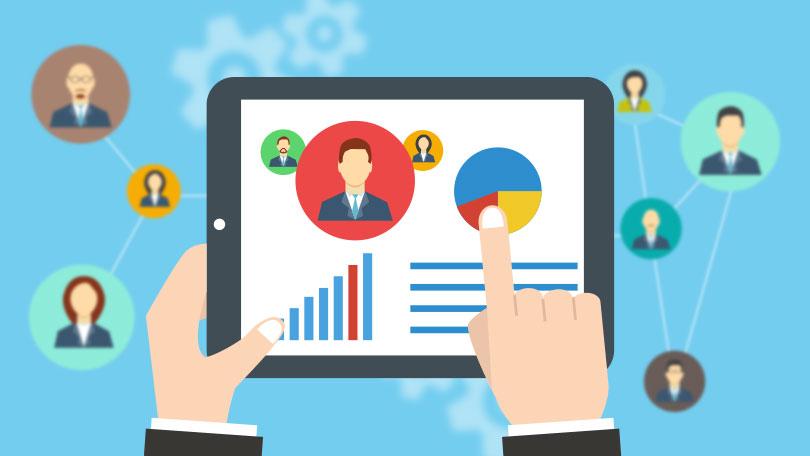A key aspect of any HR software is an HR dashboard, which is essentially a visual representation of the HR metrics of the company. It is a good means to gather information, and then sort, analyze, and repackage it for the consumption of decision-makers within the organization. Dashboards enable managers to view information in various formats, quickly identify problem areas, and determine root causes behind them. Dashboards may be used to monitor employee productivity, human resource utilization or to display metrics such as employees on leave, goal setting and performance, cost metrics of employees, timely attendance, feedback on various initiatives, etc. The more critical and real-time the information presented on a dashboard, the more useful it becomes for decision-making.
HR software, through the use of an HR dashboard, aids decision-making in several ways.
Recruitment: Hiring the Right Personnel
HR analytics derived from HR dashboards allow for better recruitment decisions. This is made possible through metrics surrounding the skill inventory within the organization currently vs. the desired skill levels in various areas. This information can then be used to make more informed hiring decisions via HR dashboards.
Employee Efficiency Projections
HR dashboards help answer questions like how long it will take for an employee to become a valuable resource to the company, or what level of resources have to be invested before a new recruit can start delivering results.
Employee Productivity
Metrics such as revenue per employee and ‘salary increase vs. revenue increase’ help gauge employee productivity. Such metrics in HR dashboards aids decision-making as they help determine the areas in which resources are being best utilized in.
Diversity Tracking
HR dashboards can allow the tracking of diversity within the organization. Disability and gender are two areas where this applies. For instance, HR dashboards are capable of throwing up data such as “45% of Level 3 executives are women”. Such a consolidated organization-wide view helps project the company’s merits, via an HR software, to internal and external stakeholders.
Costs
Metrics such as the cost of benefits as a percentage of revenue, salary deviation by job level (the difference between the top and bottom pay for each job level) and average salary help make cost-related decisions in a data-backed manner. HR software, with a built-in HR dashboard, help a lot here; HR personnel don’t have to mine data out of multiple Excel sheets.
Employee Retention
HR dashboards are capable of providing data around involuntary and voluntary termination rates, employees eligible for retirement/early retirement, average retention period, etc., thus allowing for better human resource planning. Employee exits may also be classified in the HR software according to the reasons stated for the same so as to provide further insights around exits .
Employee Satisfaction
Data that is captured around employee satisfaction is presented in meaningful forms by the HR dashboard, pre-built or configured in the HR software. Average employee job satisfaction, employee empowerment, training and development effectiveness, etc., allow for powerful decision-making based on employee perceptions. Here, an HR software also helps with the collection of data from employees.
Closing notes
A number of HR software in India offer HR dashboards that bring much value addition. You should evaluate multiple HR software based on the power of HR dashboards they comprise before you buy any HR software in India. greytHR is a good example of an HR software that offers a powerful HR dashboard conducive to decision-making with great insights.
